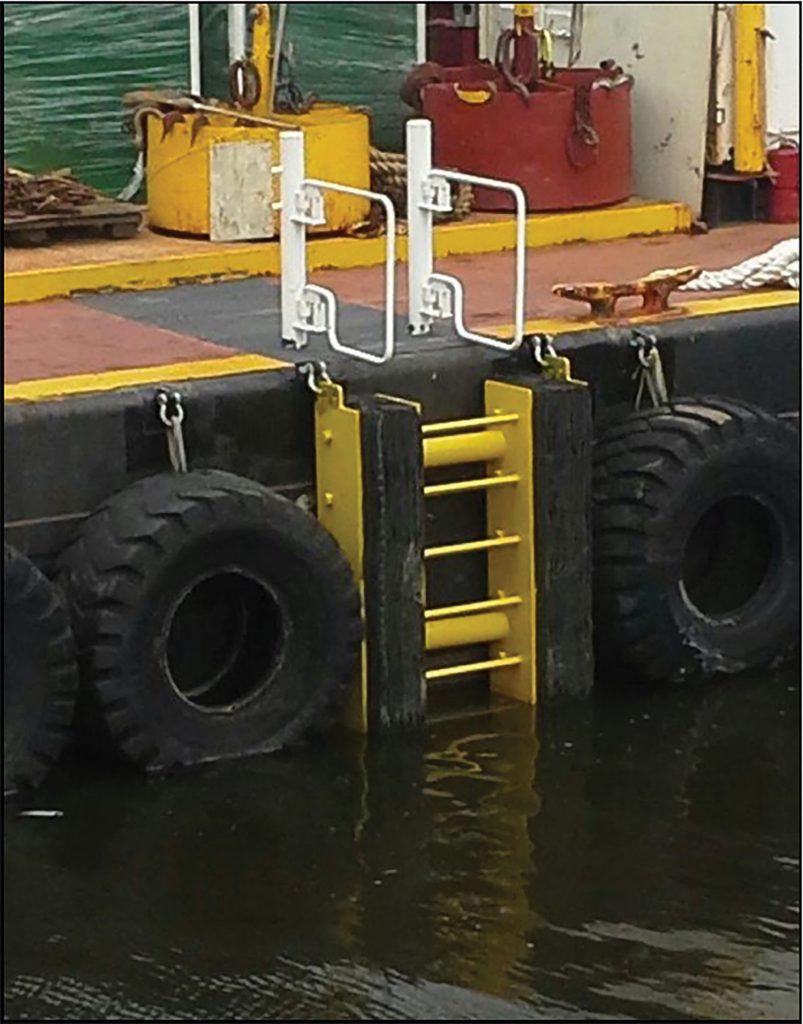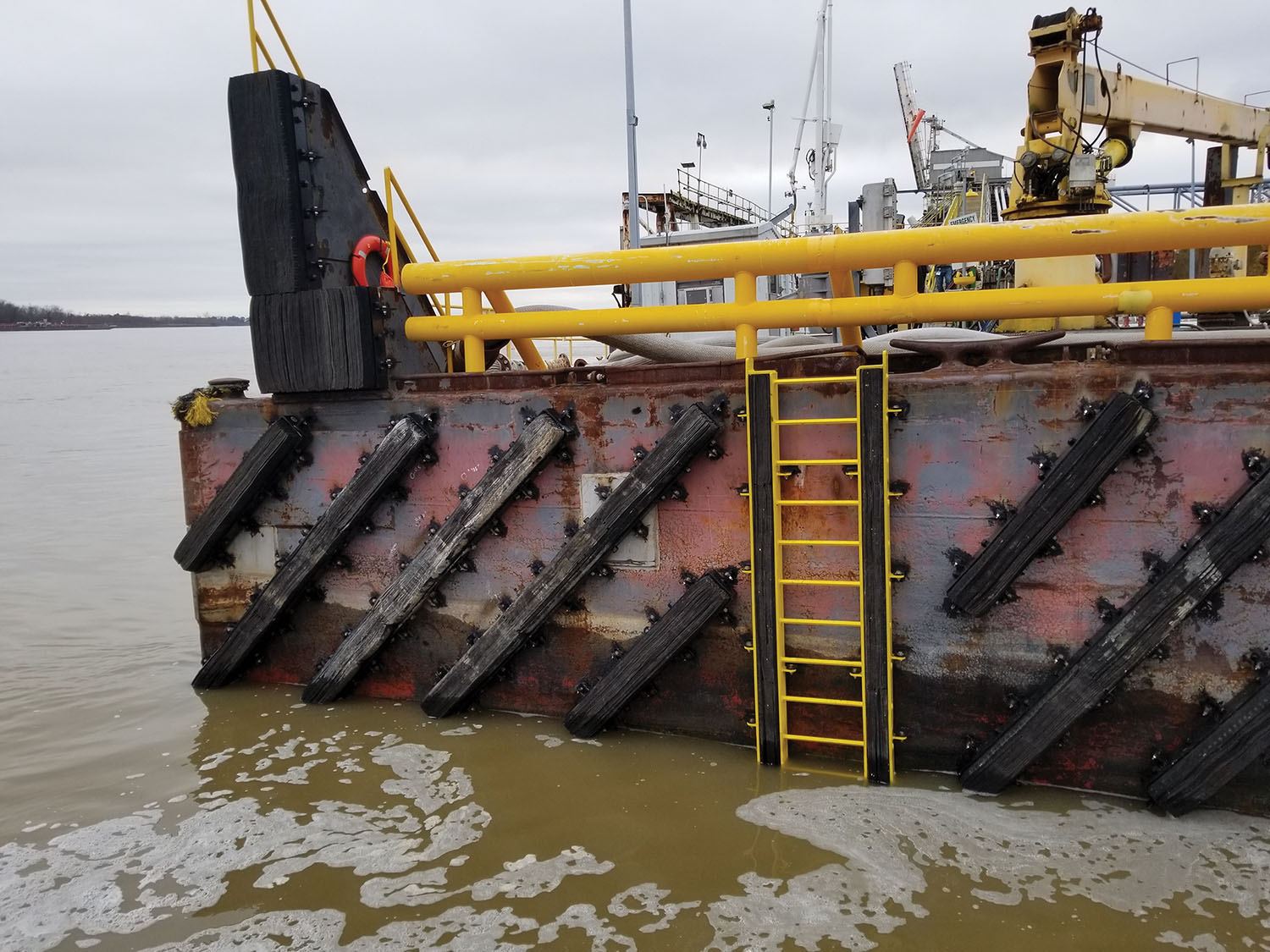By Robert Beaumont
Schuyler Maritime
After years of traveling across the country visiting docks in pursuit of customers for his custom designed and fabricated vessel fenders, Dale Langley noticed that the dock access ladders port and vessel operators were using needed better protection.
“I noticed that the ladders were usually beat up. The fendering that should be there to protect the ladders was missing or ineffective. Ladders must be well protected because this is where vessels need to berth and moor to be able to access the dock,” explained Langley, who is general manager of Schuyler Maritime.

Often ladders are designed to be protected by the fender systems used elsewhere on the dock that flank the ladder. There could be tires or wood timbers to the east and west of the ladder. However, the ladder itself is almost never fendered. This makes the ladder susceptible to damage from berthing or moored vessels. If the ladder itself is not fendered, there is essentially a gap in your fender system where a vessel can snag or strike the exposed ladder.
The solution is to integrate a fender system into your ladders.
Schuyler Companies began the process of working with its clients to come up with a practical design that could meet all the applicable safety requirements while also achieving the client’s operational goals. The result was a ladder system uniquely suited to service the docks and vessels that operate on the nation’s coastal and inland waterways.
The rubber fender that is integrated into the ladder is the same laminated-type fender used on pushboats, tugs and barge docks. The laminated fender is 100 percent made in the United States from U.S. steel. The rubber in the fender is a recycled product produced using old truck tires. The average fender project diverts hundreds of tires from the nation’s landfills. The laminated fender has supplanted nearly all other tire, wood or molded rubber products for this application.
The attributes that make the laminated fender so effective and desirable for these vessel applications make them ideal for barge docks as well. Schuyler fenders provide superior abrasion resistance, absorb impacts better than wood or composite fenders, wrap around curved surfaces, easily mount to any surface and never rot or wear away. Incorporating these fenders into the ladders extends these benefits to the ladder assembly.
There are several ways in which these ladder fenders can be mounted. They can be welded to any steel structure. They can be bolted or anchored to the mounting surface using bolts or concrete anchors. The latest development in the design of the Schuyler ladder fender has been the hanging, or removable ladder design.
“While working with clients who were operating barges, it became apparent that having the ability to quickly remove the ladder when necessary was a convenient operational advantage for the system,” Langley said, explaining the origins of the hanging ladder design. “This drove the development of our removable ladders.”
The removable ladder type is designed to hang from pad-eyes installed on the mounting surface using shackles. Unlike the bolt-on or weld-on types, the integrated fenders extend through the ladder frame. This provides protection for both sides of the ladder. Additionally, this configuration provides additional energy-absorbing capabilities allowing the system to safely absorb higher energy impacts than a bolt-on ladder fender system. The mounting configuration makes it very easy to remove the fender. One or two workers can simply uncouple two to four pad-eyes and remove the ladder for storage.
“The success of the ladder fender design has been communicated to us by the customers that have used the fender,” Langley concluded. “They have told us how practical and durable the systems are, but more importantly, they have come back over and over to purchase additional systems for their docks and barge fleets.”




